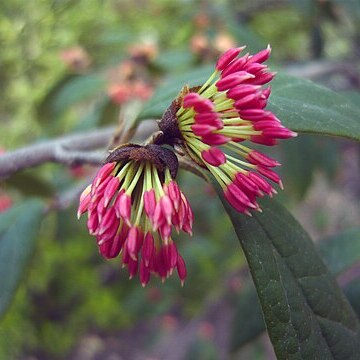Evergreen polygamous-monoecious trees or shrubs. Leaves entire or denticulate above the middle, penninerved. Stipules small, caducous, leaving small scars. Racemes or headlike spikes, initially sometimes involucre-like enclosed by large lower bracts. Flowers free, sustained by 0-2 groups of 3(-2) lanceolate small bracts, which occur also on the sides and the top of the urceolate receptacle, which envelops the ovary in 9 and § flowers and bears in the latter also stamens on its top. Calyx and petals lacking. Stamens in female flowers lacking, in ☿ or male flowers 4-10; filaments of varying length, subulate; anthers basifix, ellipsoid, with 4 pollen sacs, 2-celled, dehiscing laterally with 2 longitudinal slits, connective often apiculate. Staminodes lacking or, occasionally, a few to numerous stamens, sterile and slightly smaller. Disk lacking. Ovary in ♂ flowers very rudimentary or lacking, in ☿ and female flowers enveloped by the receptacle, free, 2-celled, each cell with 1 pendent ovule; styles 2, subulate, slender, divergent, adaxially with decurrent, papillose stigmas. Fruits free, 2-celled, 2-or 4-valved, woody, at the base surrounded by the split receptacle or wholly enclosed by it. Seeds 1 in each cell, ovate-oblong, wingless; hilum apical, impressed; albumen thin.

